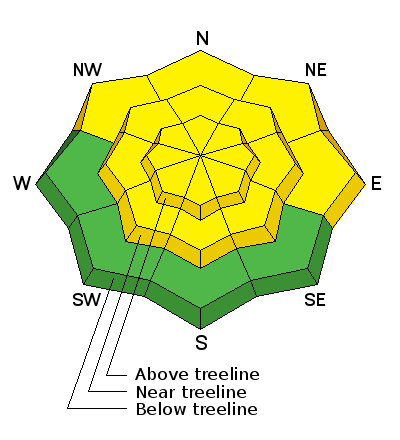Forecast for the Uintas Area Mountains

Tuesday morning, February 14, 2017
Above tree line, on steep leeward slopes in the wind zone, a MODERATE avalanche danger exists. Both new and old wind drifts will react to our additional weight and human triggered avalanches are possible. While more the exception than the rule, an isolated danger of human triggered avalanches is found on steep wind sheltered terrain where you could still trigger a slide that breaks to weak snow now buried several feet deep.
On the south half of the compass expect the avalanche danger to rise to MODERATE and human triggered avalanches become possible on steep sunny slopes as the day heats up.
















